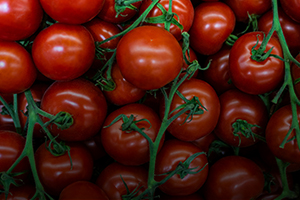Healthier Tomatoes

Many of the plant-based foods that we eat today were domesticated from wild plants by breeding selected mutants that possessed desirable characteristics. For example, South American wild tomatoes, which produce fruit about the size of the pea, have been bred over 3,000 years into the larger varieties we now find in supermarkets by picking only the largest fruits for propagation. But the increased size comes at a price with regard to flavor and nutritional value.
Now researchers are looking at ways of redomesticating several types of wild tomatoes to restore some of the desirable traits that have been lost over time. Using the CRISPR gene-editing technique, they have boosted lycopene levels while tripling the size as well as the number of fruits produced. Other experiments are aimed at improving disease resistance, increasing salt tolerance and enhancing levels of vitamin C.
CRISPR also has the potential to turn other wild plants into viable food crops, including foxtail, oat grass and amaranth. Wild plant varieties have the advantage of being more resilient to climate changes and disease. And there are plenty to choose from – out of an estimated 50,000 edible plants in the world, 90 percent of our food currently comes from only 15 basic crops. Best of all, with the help of today’s technology, the transition from wild plant to food staple could be accomplished in a few years, rather than a few millennia.
For information: Jorg Kudla, University of Muenster, Schlossplatz 7, D-48149, Muenster, Germany; phone: +49-251-832-4813; fax: +49-251-832-3311; email: jkudla@uni-muenster.de; Web site: https://www.uni-muenster.de/en/